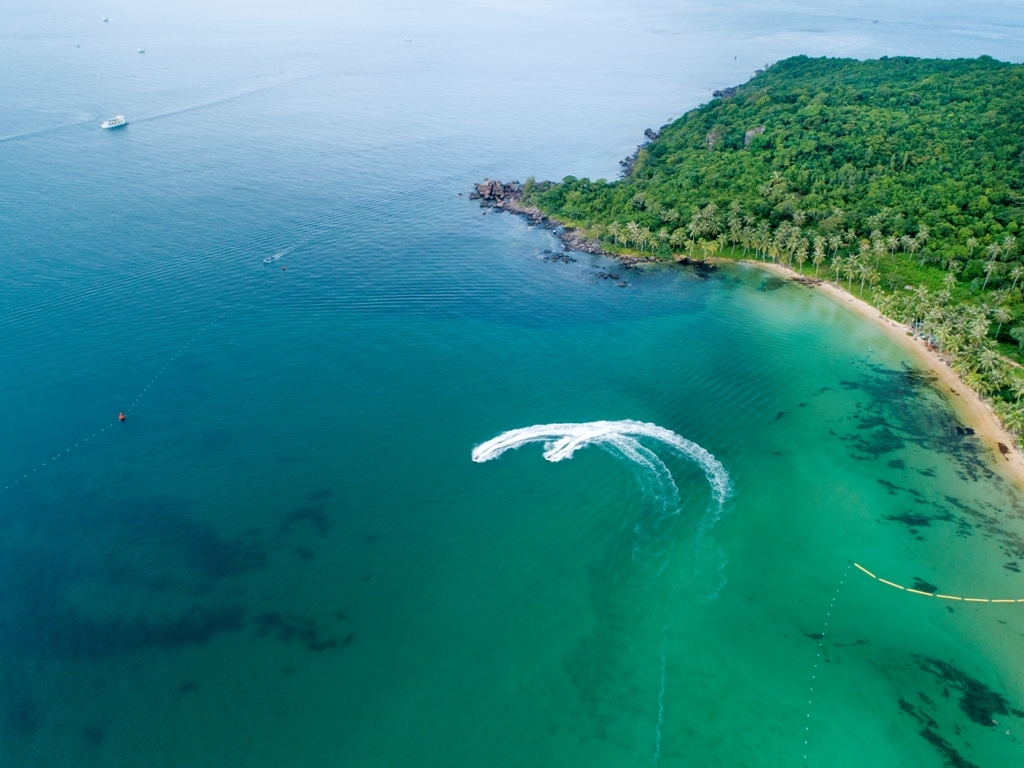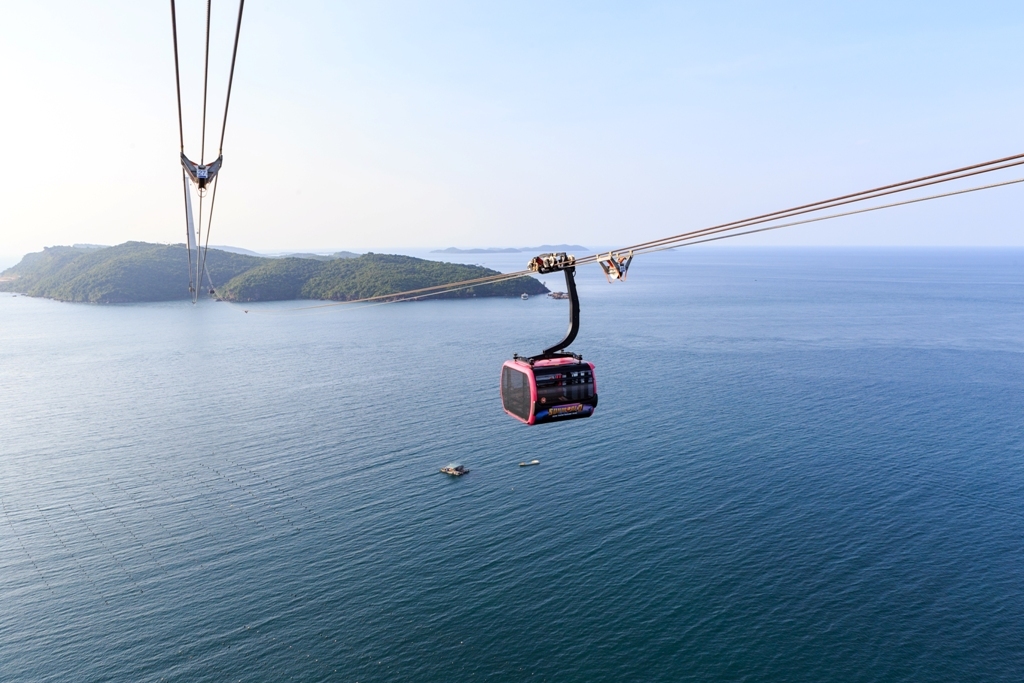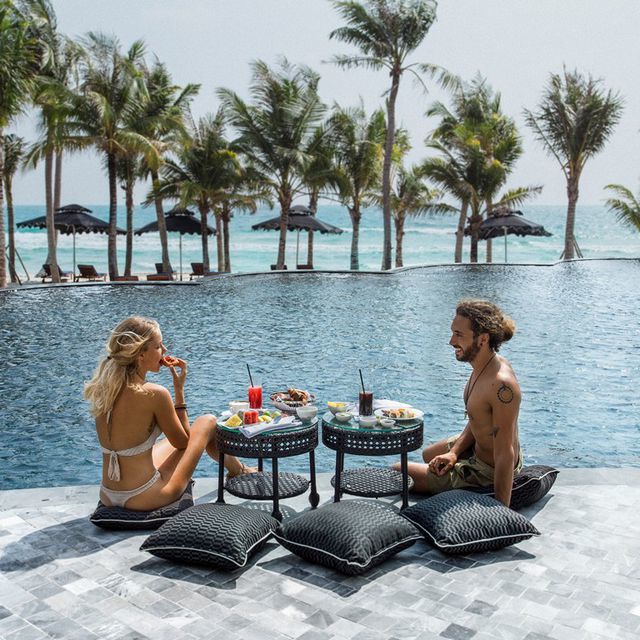Remote destination
At the turn of the 21 century, Phu Quoc - blessed with stunning beaches and an attractive year-round climate - was an undeveloped tropical island with minimal tourism. But even then many tourism observers believed it had the potential to one day compete with the likes of Bali and Phuket.
The island would develop rather slowly for the next 10 years and remained associated with simple beachside pleasures such as eating fresh seafood, snorkeling or just flopping around on an otherwise empty beach. Most visitors stayed for just two days before flying back to Ho Chi Minh City or Hanoi - the island had no direct flights from overseas.
 |
Roads in and out of Duong Dong, the capital of Phu Quoc, were mostly made of red clay and full of pot holes - the first clue for visitors that tourism in Phu Quoc tourism had yet to fulfill its potential.
All around the island, there were very few high-end beach resorts and 5-star hotels, and in general, tourist infrastructure and services in Phu Quoc were not of a high-enough level to attract domestic and international visitors. In 2010, the island welcomed only 239,000 visitors.
Opening in 2012, a new Phu Quoc International Airport would help to boost arrivals. In 2015, 850,000 tourists came to the ‘Pearl Island’, a significant jump on 2010, but still far below expectations.
 |
Over the past three years, however, the island has started to see explosive, exponential growth. Nowadays, more visitors come in one month than the whole of 2010. For example, nearly 340,000 visitors came to Phu Quoc in June 2018 and over 407,000 visitors in July 2018.
According to the Master Plan for Phu Quoc Island of Kien Giang Province, by 2030, the island is forecasted to welcome approximately two to three million tourists annually by 2020. But by late 2017, Phu Quoc had surpassed the milestone figure of three million visitors in one calendar year.
A strategic vision takes hold
Much of this success can be attributed to the fact that Phu Quoc had started to attract more strategic investors who were directing major investment into tourism infrastructure and services on the island.
In fact, thanks to one 5-star resort in particular, the island has already become a leading destination for luxury holiday for billionaires and A-list celebrities across Asia. Named the “World's Leading Luxury Island Resort & Villas 2018” after opening in 2016, JW Marriott Phu Quoc Emerald Bay, designed by the King of exotic luxury resorts Bill Bensley, is on a par with what luxury tourists would encounter in the world’s most exclusive destinations.
 |
Located on the southern cape of Phu Quoc, the utterly unique JW Marriott Phu Quoc Emerald Bayhas been lauded for its fantastical design, superlative services and heavenly setting. After it opened, the whole island was once again being tipped to become one of Southeast Asia’s leading beach destinations.
The island has also received a huge profile boost thanks to the on-the water villas at Premier Village Phu Quoc Resort which is situated right at the tip of Ong Doi Cape and launched in April 2018.
The state-of-the-art amusement complex, Sun World Hon Thom Nature Park has also helped to put Phu Quoc on the map, especially because of how you get there - by taking a breathtaking ride on the world’s longest over-the-sea cable car, which officially opened on February 2018.
In the future, many more ambitious projects such as Sun Premier Village Kem Beach Resort, Sun Premier Village The Eden Bay, Sun Premier Village Primavera will soon be put into operation, paving the way for Vietnam’s largest island to finally establish itself as one of the world’s leading destinations for luxury travel, and compete with the likes of Phuket or Bali, perhaps even the Maldives.
A successful formula for tourism growth
 |
According to Kien Giang’s Tourism Department, in 2018, Phu Quoc welcomed more than 4 million tourist arrivals, a growth of 36% compared to the same period in 2017. By the end of 2019, the island is expected to have posted recorded numbers again. Investors are certainly banking on the island to continue this exponential growth.
By the end of 2018, a total of 248 tourism projects have been granted investment licenses on the island with total capital of VND 335,448 billion (approximately $14 billion).
“The major resort projects have contributed to developing Phu Quoc into a large and modern centre of tourism, achieving a year-on-year growth of some 36 percent. The opening of JW Marriott Phu Quoc Emerald Bay coincided with a surge in international tourist arrivals to the island. It is expected that when a series of billion-dollar projects are completed, Phu Quoc will soon meet the target of receiving 5 million tourists per year,” said Mr. Le Cong Nang, Head of Marketing and Communication Department of Vietrantour Tourism Company.
Mr. Nguyen Van Tuan, Former Director General of Vietnam National Administration of Tourism is in full agreement with this analysis and projection.
“The most prominent factor behind these accomplishments has been the large-scale projects and high-quality, attractive tourism products that have drawn investment from strategic investors and top tourism businesses such as Sun Group and Vingroup,” says Mr. Tuan.
“Consequently, these investment projects have contributed to improve infrastructure and accommodation units, and create luxury tourism products that can gradually contribute to shaping the image and brand of Vietnam tourism as well as increasing the attractiveness of tourist destinations,” he said.
With this successful formula working its magic and more major high-end developments in the pipeline, Phu Quoc finally looks set to fulfill its destiny as one of the world’s most attractive destinations.
PV